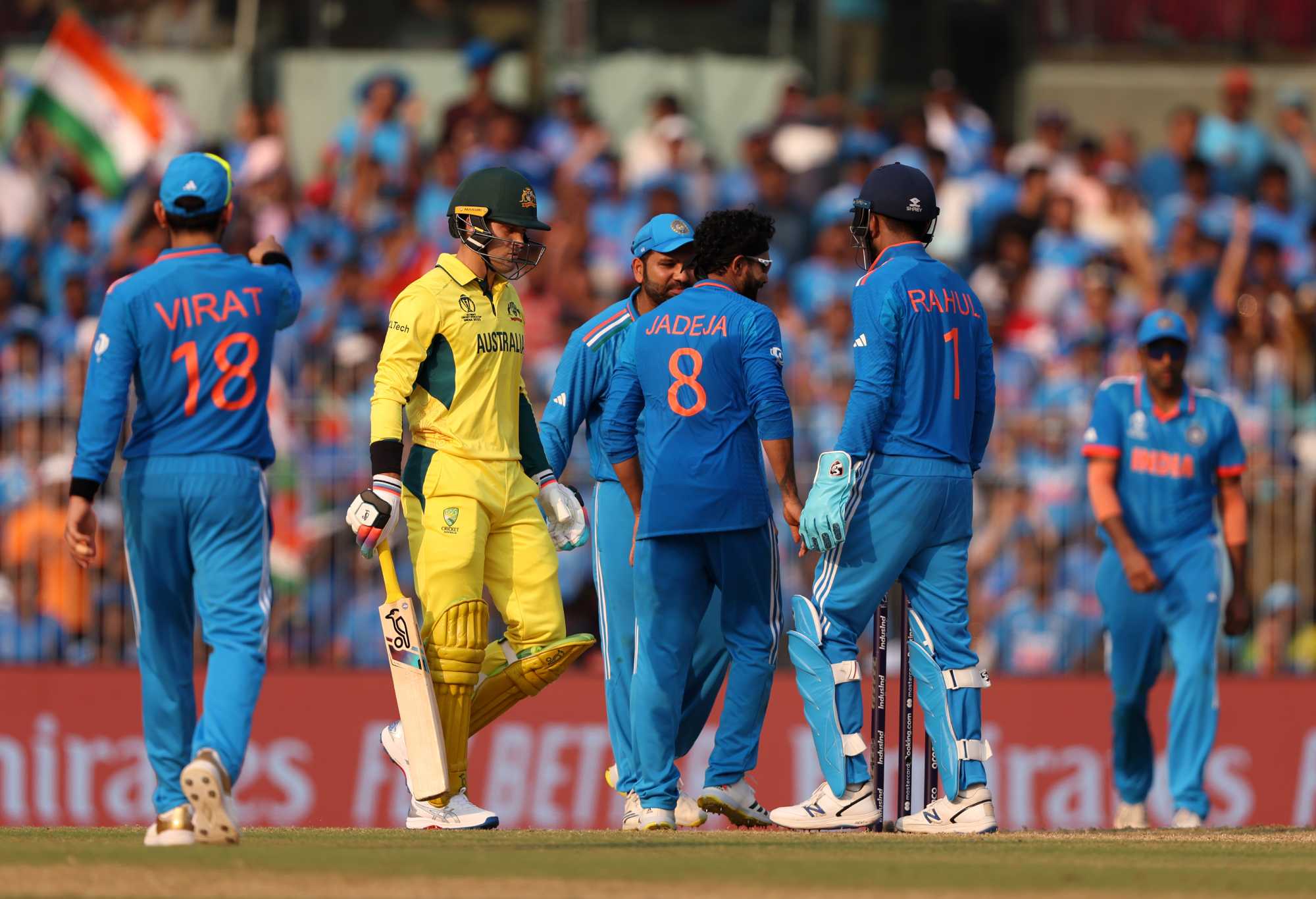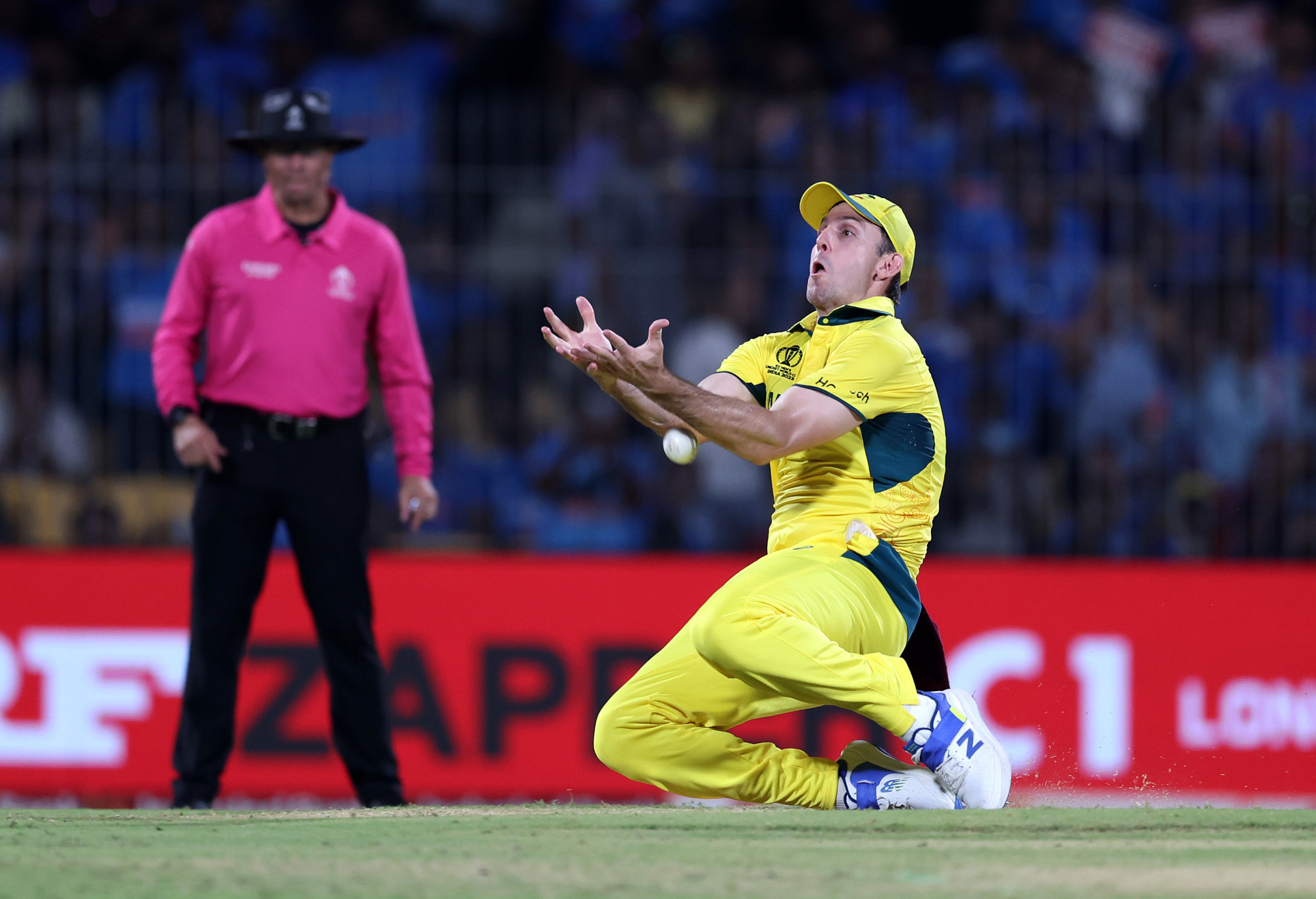Australia’s chances of winning the World Cup took a huge dent with their first-up loss to India but that’s not where their troubles end.
Just like the Test team, the men’s ODI squad is ageing (by the day in the harsh Indian sun) and there is a distinct lack of players who have shown they can take over as the majority of the side fade into retirement.
David Warner has one foot out the retirement door, Steve Smith won’t be too far behind him in the 50-over format at least, while nine other members of this 15-man World Cup squad are in their 30s.
Injured opener Travis Head and Marnus Labuschagne, who are 29, back-up keeper Josh Inglis (28) and Cameron Green (24) are the only players who aren’t in the veteran category.
And while Head has shown over the past 12 months that he can be an ODI star, Labuschagne is clearly not suited to bash and barge cricket, Inglis is very much unproven at this level while Green’s not having much of an impact.
Other players who have filled in for the Australians in recent matches have shown promise but nobody has produced the results or had enough of a chance to prove they can take over when Mitchell Starc, Glenn Maxwell, Josh Hazlewood, Stoinis and Zampa retire from the white-ball arena or get tapped by the selectors.
There is talent out there among the likes of Tanveer Sangha, Tim David, Nathan Ellis, Aaron Hardie, Matt Short, Ashton Turner and Lance Morris but there’s going to be some tough sledding ahead for Australia after this World Cup as they get thrown into the deep end pretty much all at once with little experience under their belt.
The Australians looked like a tired team in their six-wicket thumping at the hands of India. Same batters struggling in turning conditions on India’s spinning tracks – it’s a movie the Australian cricket fan has seen on repeat.
It appears Green is being spread way too thin between his Indian Premier League commitments and being an all-rounder in all three national teams, resulting in a pale imitation of what he’s capable of achieving.
There’s no questioning his talent or potential but he’s yet to lock down a role that suits him in either white-ball format.
Batting at No.7 is too low because, like Steve Smith, Labuschagne and Alex Carey ahead of him in the order, he prefers to have more than a few overs to find his feet before stepping on the accelerator.
His innings in the World Cup opener against India was typical of what we’ve seen from him on several occasions in the past 12 months where his steady approach can be an albatross to the team’s innings if he doesn’t convert the start into a decent total.

Alex Carey. (Photo by Robert Cianflone/Getty Images)
Green had plenty of time to bat at Chennai but he’s too unsure of himself when facing the spinners from the get-go.
He fell in the 37th over, just a few balls after Maxwell had departed, unsure of whether to attack or defend and doing nothing but spooning an easy catch to backward point for a measly eight from the 20th delivery he faced.
On batting alone, Green has endured a lean run in 2023 with a Test average of 29.88 inflated by his breakthrough hundred on the Ahmedabad featherbed while in ODIs, he’s managing just 16.16 at a cumbersome 66.43 strike rate.
Green either needs to be up the order or out of the team. Fellow all-rounders Marcus Stoinis and Sean Abbott are better suited to the lower-order hitting role from ball one.
With Head out with his broken finger, the Aussies were short a hitter in their batting unit but it was actually the right kind of line-up for the tricky pitch they encountered.
But Warner, Smith, Labuschagne and Maxwell all failed to convert starts into anything significant.
And even when Mitchell Starc and Josh Hazlewood ripped through the top order to reduce India to 3-2, they didn’t hold the upper hand for long after Mitchell Marsh’s costly dropped catch off Virat Kohli.

Mitchell Marsh drops a catch to spare Virat Kohli. (Photo by Matthew Lewis-ICC/ICC via Getty Images)
With only one frontline spinner, the Australians lack both the containment and wicket-taking ability that India enjoyed by having Ravichandran Ashwin, Kuldeep Yadav and Ravindra Jadeja wheeling away through the middle overs.
It’s only one loss and in this World Cup format where teams have nine games to reach the semis, it’s not a total disaster for Australia like their first-up caning to New Zealand in the T20 tournament on home soil last summer.
But it’s difficult to see this Australian side competing with teams that have a variety of top-quality spin options or power hitters in the middle order.
And after losing their last three matches in South Africa last month, they need a dramatic form reversal to break their World Cup duck against the Proteas in Lucknow on Thursday.
While the ICC is in charge of pitches in this tournament, this is another renowned turning wicket and even if they tried to make it into a pitch that didn’t favour spin, it wouldn’t work.
Adam Zampa and Maxwell were ineffective against India while South Africa are likely to bring in wrist-spinner Tabraiz Shamsi – their leading ODI wicket-taker in recent years – to complement the orthodox spin of fellow left-armer Keshav Maharaj.

(Photo by Sydney Seshibedi/Gallo Images/Getty Images)
And there’s also the small matter for the Australian bowlers of stopping the Proteas’ power hitters with Quinton de Kock (100 off 84), Rassie van der Dussen (108 off 110) and Aiden Markram (106 off 54) destroying Sri Lanka’s bowlers as they amassed 5-428 to kick off their campaign.
With Heinrich Klaasen, who clubbed the Aussies for 174 recently at Centurion, David Miller and Marco Jansen, the South Africans have the most potent batting firepower in the tournament.
Unless the lesser-ranked sides of Afghanistan, the Netherlands and Bangladesh cause upsets, the race for the semis is a seven-way contest between the established Test-playing nations.
That means the Aussies will almost be in a must-win situation if they again go down to South Africa or at the very least in a scenario where they’d have to win six of their final seven pool games.
Head is likely to miss at least the next three matches and by the time his broken hand is ready for action, it could be too late.































































































